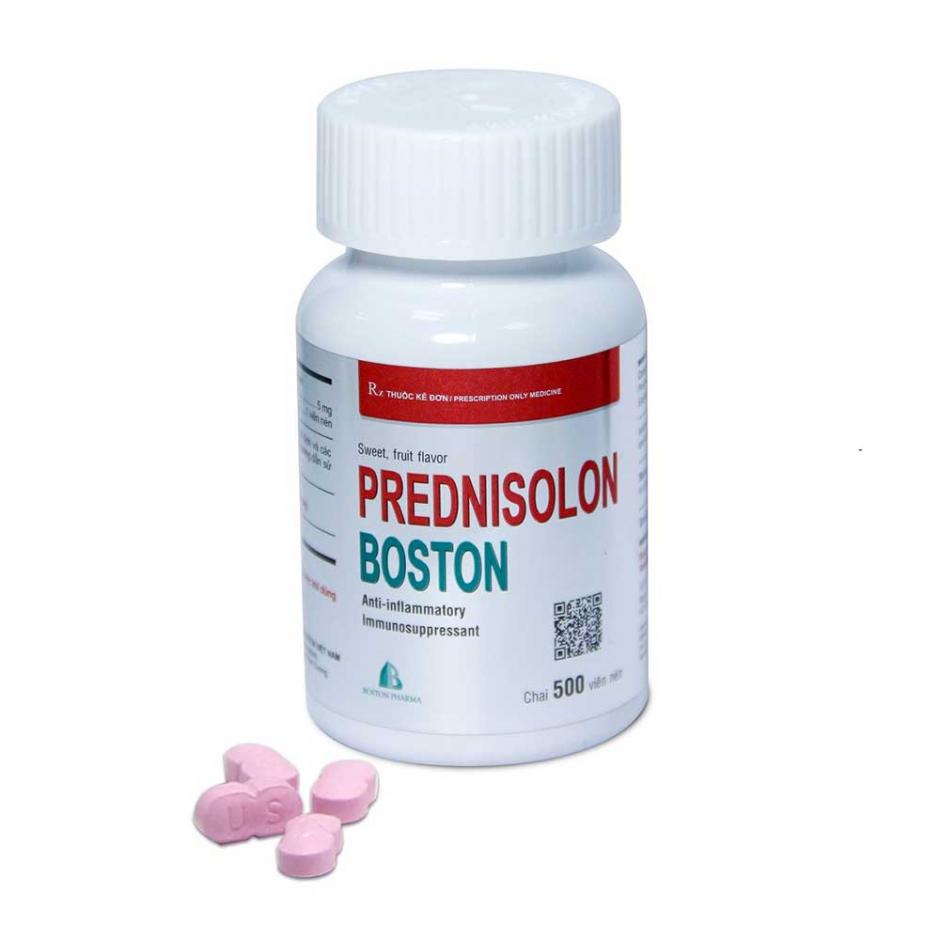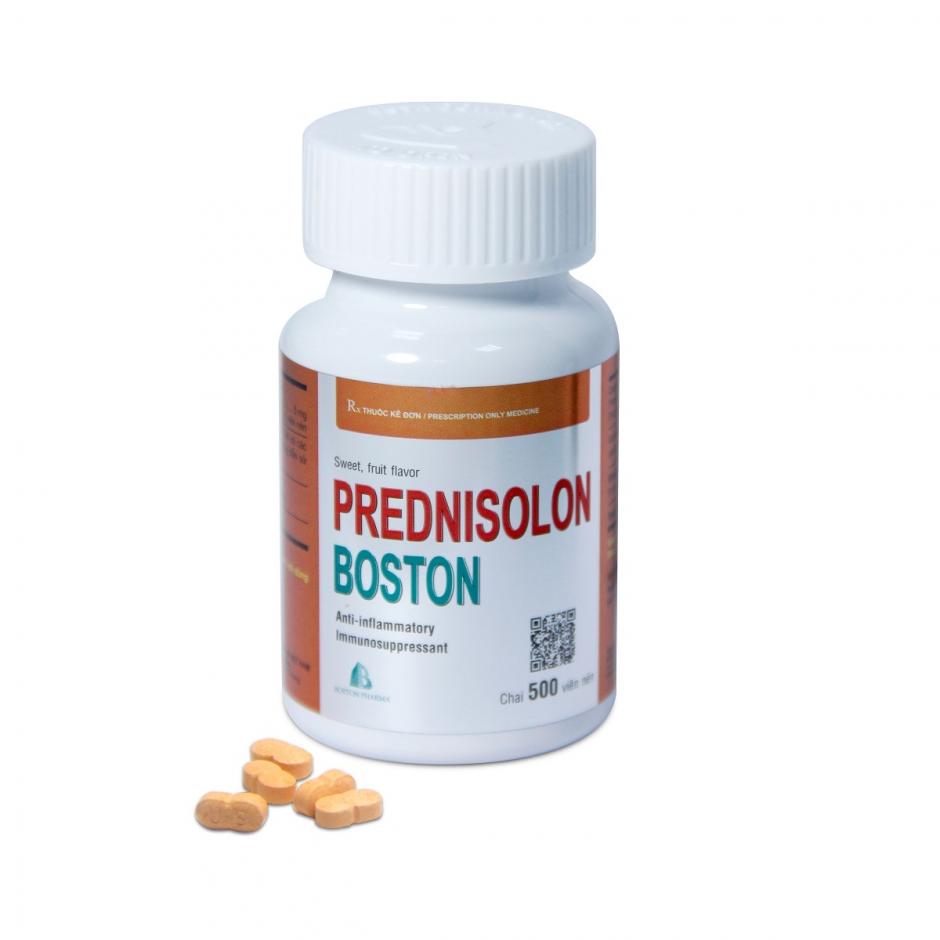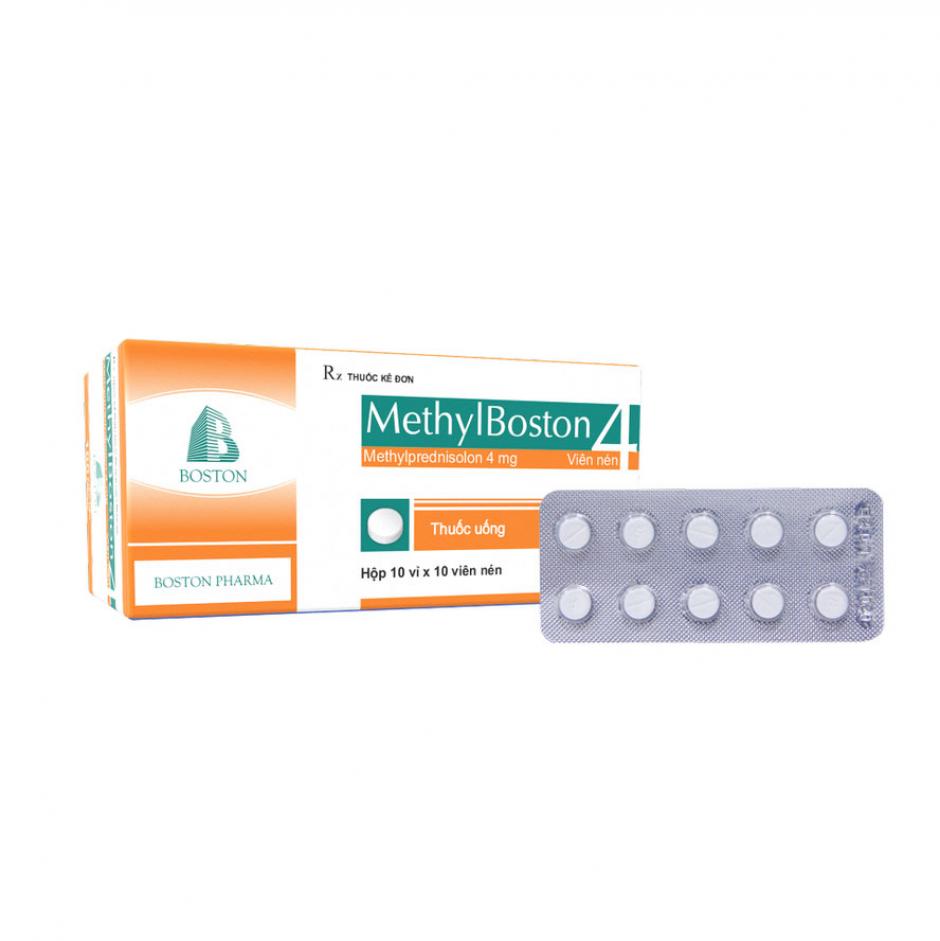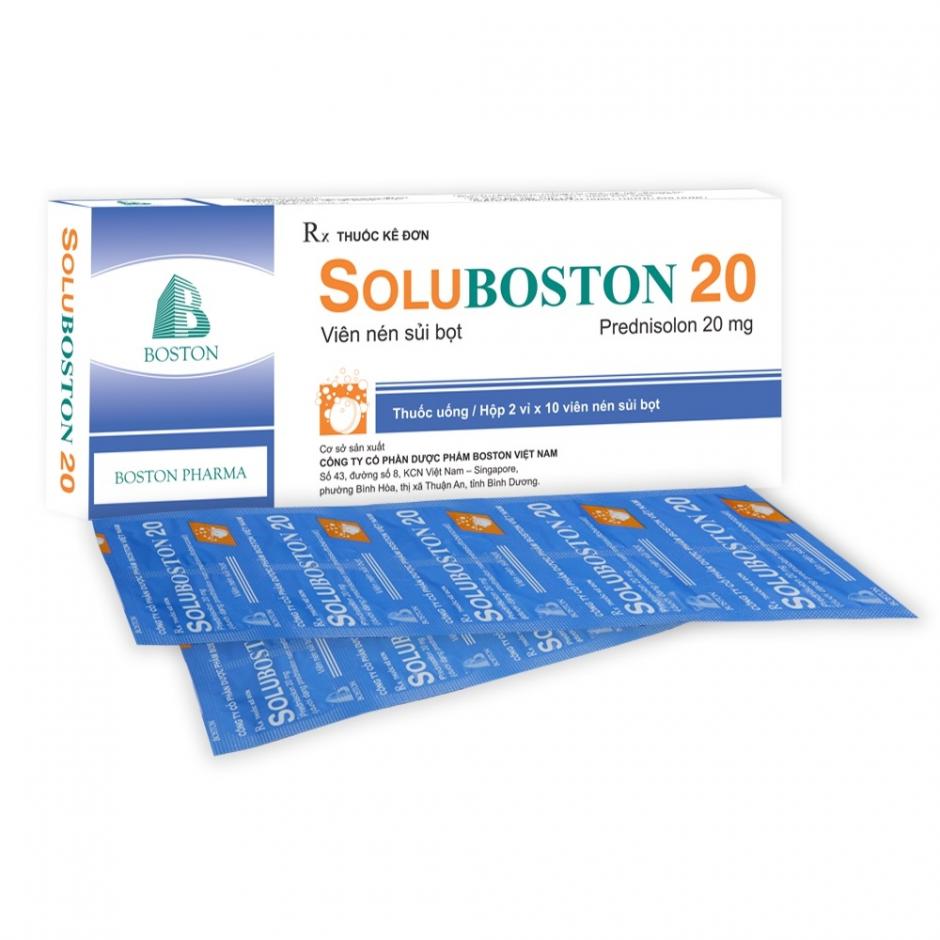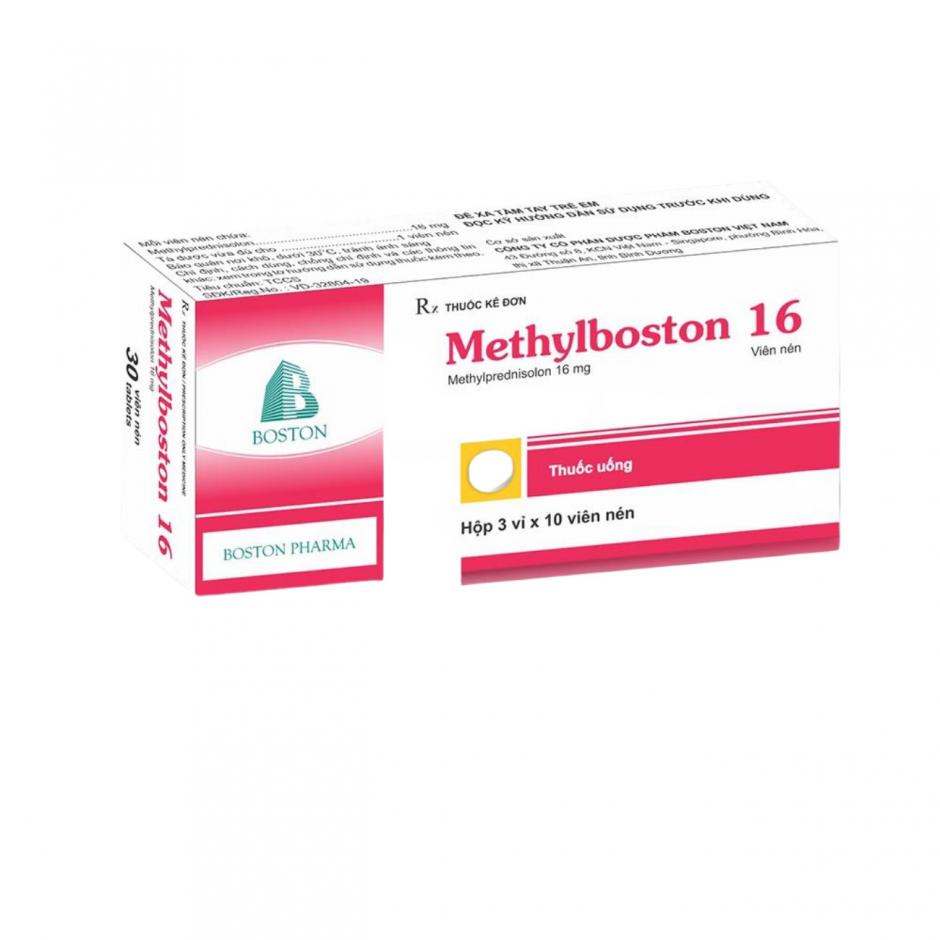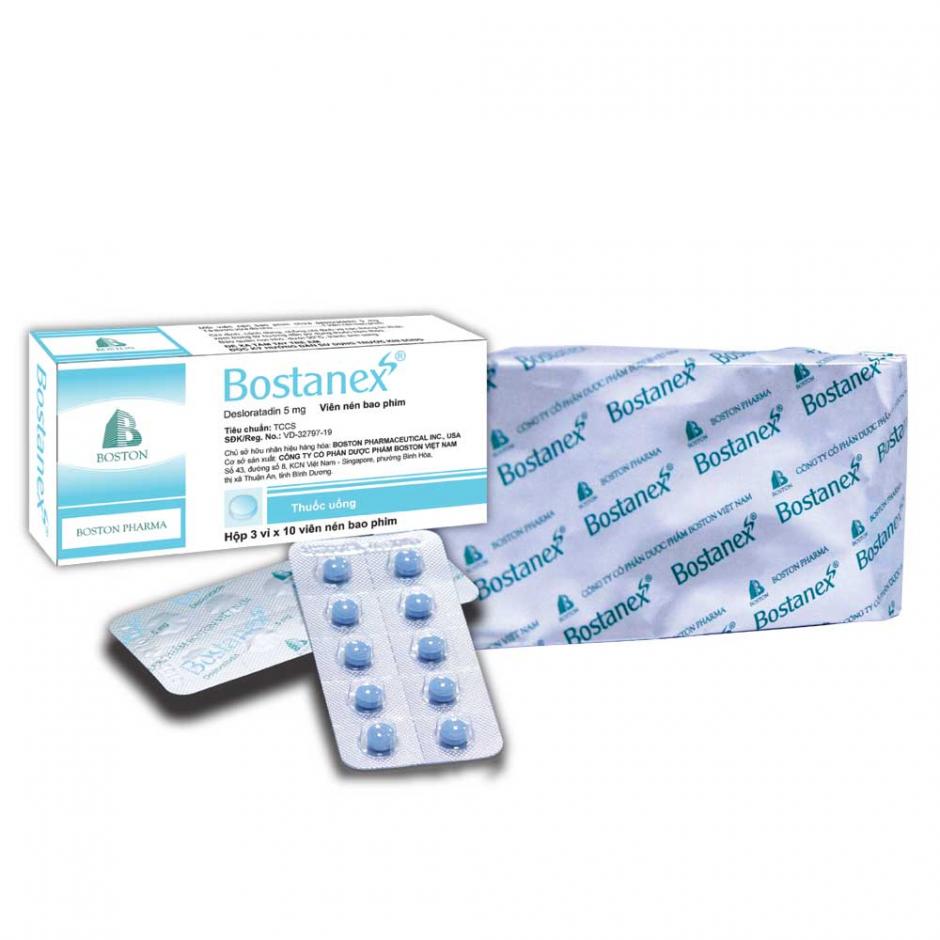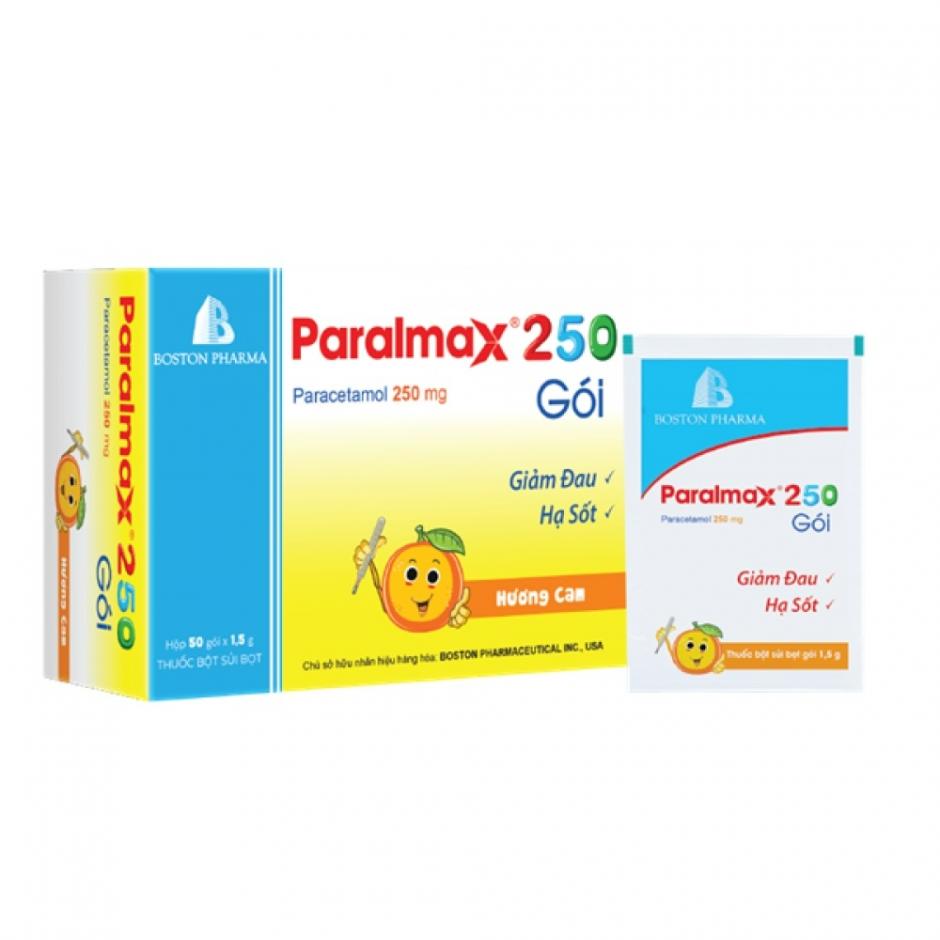| Prednisolone | 5mg |
Prednisolone is indicated for the treatment of inflammatory and allergic.
INSTRUCTION FOR USE
Administration
-PREDNISOLON BOSTON is used for oral route, after meals.
-The lowest effective dose should be used for the minimum period in order to minimise side effects.
Dosage
-Adults
+ Initial dose: 5 to 60 mg/day, taken as a single dose in the morning, or administered on alternate days. Drug taken after meals. Doses can usually be reduced within a few days but if necessary should be continued for several weeks or months.
+Maintenance dose: 2.5 to 15 mg/day. Cushing's syndrome may occur at doses >7.5 mg/day with long-term use.
-Children: Only used in specific indications with the minimum dose in the shortest possible time:
+ Anti-inflammatory and immunosuppressive: 0.1-2mg/kg/day, divided into 1-4 times.
+ Acute bronchial asthma: 1-2mg/kg/day, divided into 1-2 times (maximum 60mg/day), for 3-10 days. Long-term treatment: 0.25 -2mg/kg/day, orally once a day in the morning or every other day as needed to control asthma.
+ Nephrotic syndrome: Initially 2 mg/kg/day or 60 mg/m2/day (maximum 80 mg/day), divided into 1-3 times, until urine is protein-free for 3 consecutive days or for 4-6 weeks. Thereafter, a maintenance dose of 1-2 mg/kg or 40 mg/m2 is used, every other day in the morning for 4 weeks. Long-term maintenance if recurrence is frequent: 0.5-1.0 mg/kg, every other day for 3-6 months.
Contraindications
Hypersensitivity to prednisolone or any of the excipients.
Systemic infections except for specific anti-infective therapy.
Acute keratitis caused by Herpes simplex.
Taking live or attenuated viral vaccines (when taking immunosuppressive doses of corticosteroids).
Chicken pox.
WARNINGS AND PRECAUTIONS
- Before long-term glucocorticoid treatment, must check the electrocardiogram, blood pressure, chest and spine X-ray, test
Glucose tolerance and assessment of hypothalamic-pituitary-adrenal (HPA) axis function for all patients.
Prednisolone may cause hyperadrenocorticism or HPA axis suppression, especially in children and in patients receiving high doses for a long time. With long-term use for many years, atrophy of the adrenal cortex may occur after stopping treatment. Therefore, the lowest effective dose should be used for the minimum period in order to minimise side effects. Caution should be exercised and the dose reduced gradually in patients who are not at risk of relapse and are in one of the following patient groups:
+Adults: more than 40mg/day (or equivalent) for more than 1 week.
+Children: 2mg/kg for 1 week. The dose is 1 mg/kg for 1 month.
+The patient takes the dose continuously in the evening.
+ Patients taken for greater than 3 weeks.
+ When a short course has been prescribed within one year of cessation of long-term therapy.
+Patients who have had repeated courses of treatment (especially if used for greater than 3 weeks).
+Other possible causes of adrenal suppression.
Systemic corticosteroids may be abruptly discontinued in patients who are not at risk of relapse and who have been on treatment for less than 3 weeks and are not included in any of the above patient groups.
There are two complications that require immediate discontinuation or reduction to physiologic dose levels during corticosteroid therapy:
+Acute corticosteroid-induced psychosis when unresponsive to antipsychotics.
+Herpes corneal ulcers that can perforate the cornea and cause permanent blindness.
-During discontinuation of corticosteroid therapy, the dose can be rapidly reduced by physiologic therapy (equivalent to 7.5 mg of prednisolone daily) and then gradually reduced. Assessment of disease status is essential during discontinuation of therapy to ensure that the risk of recurrence does not occur.
-Patients undergoing surgery may require glucocorticoid supplementation because the normal response to stress has been impaired by inhibition of the hypothalamic-pituitary-adrenal axis.
-High doses of corticosteroids can cause acute myopathy, which is common in patients with neuromuscular disorders, which may involve ocular and/or respiratory muscles. Creatinekinase must be monitored. The use of corticosteroids can cause psychiatric disturbances, including depression, euphoria, insomnia, mood and personality changes. May aggravate pre-existing psychiatric disorders.
-Prolonged use of corticosteroids may increase secondary infections, mask acute infections (including fungal infections), prolong or worsen viral infections, or decrease response to vaccines.
- Should not be used to treat herpes simplex eye infections, cerebral malaria or viral hepatitis. Closely monitor patients with latent tuberculosis and/or reactive TB. Limited use in active tuberculosis, only used in combination with anti-tuberculosis drugs.
- Prolonged use of corticosteroids can cause glaucoma, optic nerve damage (not indicated for the treatment of optic neuritis), blurred vision and decreased visual field, posterior subcapsular cataract. Use after vitreous surgery may delay wound healing or increase bleeding.
-Long-term corticosteroid therapy has been reported to develop Kaposi's sarcoma, consider discontinuing treatment.
- Use with caution in patients with thyroid disease, liver failure, kidney failure, cardiovascular disease, diabetes mellitus, glaucoma, cataracts, myasthenia gravis, at risk of osteoporosis, risk of convulsions or in gastrointestinal disease. (cholecystitis, gastric ulcer, duodenal ulcer, ulcerative colitis). Use with caution after acute myocardial infarction.
- Children: Corticosteroids slow growth and development in children, therefore, caution and frequent monitoring is necessary when using prednisolone for a long time.
-Elderly: Common side effects of systemic corticosteroids are more severe in the elderly, especially osteoporosis, hypertension, hypokalemia, diabetes, susceptibility to infection and thinning skin, Clinical supervision is necessary to avoid life-threatening.
- Contains lactose which may not be suitable for patients with lactose intolerance, galactosaemia or glucose/galactose malabsorption.
SHELF-LIFE:
36 months from the manufacturing date. Do not use after the expiry date.
- Bottle of 500 tablets, bottle of 200 tablets.
- Al/PVC blister:
- Box of 3 blisters x 10 tablets.
- Box of 5 blisters x 10 tablets.
- Box of 10 blisters x 10 tablets.
Your comment



_Prednisolon_Boston_200v___Dau_New01.jpg)

